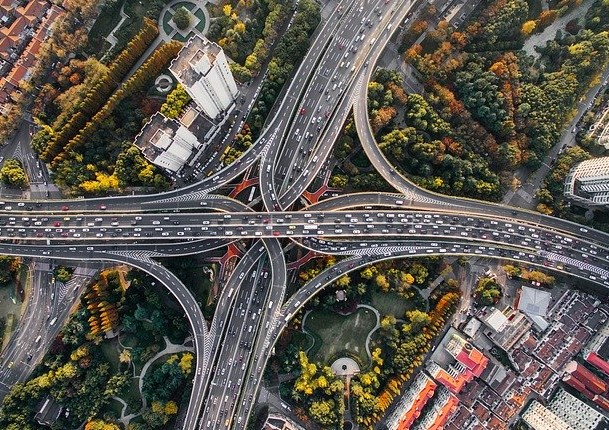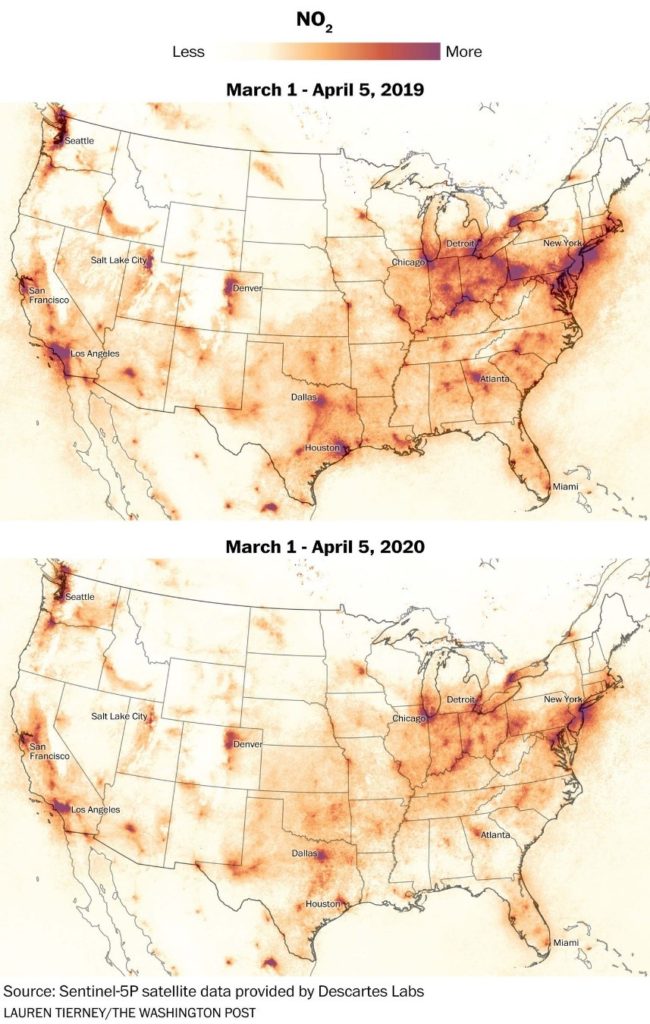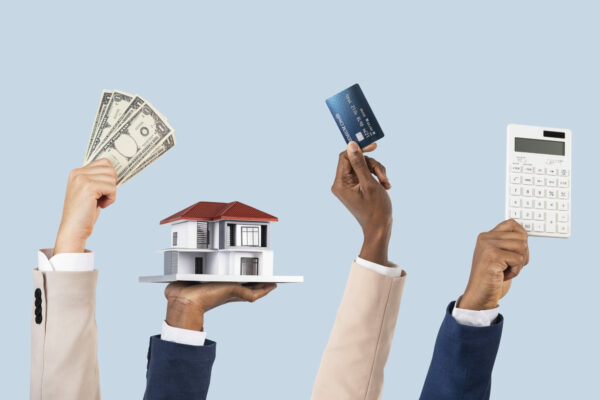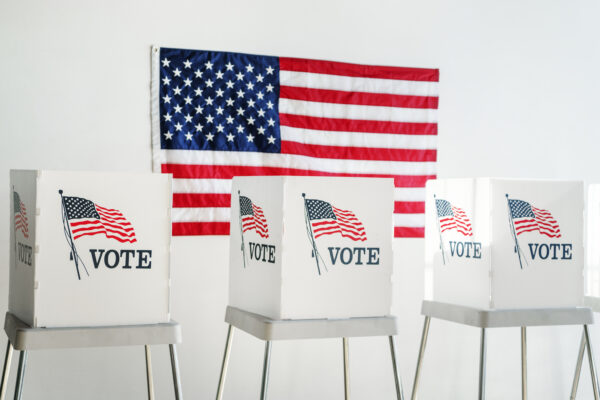
By Paul Basha, traffic engineer, Summit Land Management
What will be the future transportation results from the current COVID-19 traffic reduction?
This question is being discussed fervently in traffic engineering and transportation planning circles, as we personally and professionally notice obvious transportation changes.
Local traffic counts for our clients reveal a 10% to 40% decrease from 2019 to 2020. Traffic engineers throughout the country are reporting similar traffic volume decreases. Anecdotally, traffic congestion is notably reduced. Traffic collisions have decreased 50% in New York City, and a similar amount on California highways. Some transit agencies have reported ridership declines of 75%. Scottsdale eliminated its trolley service.
Passenger rail ridership has declined precipitously throughout the nation and world. United Airlines has decreased its air passenger capacity by 90% for May.

The Washington Post reported remarkable nitrogen dioxide level differences between March 2019 and March 2020 in the United States.
The Swiss company IQAir reveals that air pollution levels have decreased dramatically in Los Angeles, New York City, London, Madrid, New Delhi, Mumbai, São Paulo, Wuhan, Seoul, and Rome. (We were all quite worried about the air quality in Wuhan.) A websearch of coronavirus air quality photographs provides revealing 2019 and 2020 comparative images of cities worldwide.
Throughout the world, city streets are less crowded, sidewalks and parks are congested. In recent weeks Cologne, Budapest, Bogota, Calgary, Vancouver, St. Paul, Denver, Oakland, and other cities throughout the world have closed some street segments to allow people and bicycles to use space formerly worshipfully devoted to cars. However, New York City and Toronto, among other cities, have considered closing some street segments and decided to leave all streets open. Some believe the future will bring a more balanced transportation system instead of our auto-centric system.
Walking between my Old Town Scottsdale office and my Old Town Scottsdale apartment on Friday and Saturday evenings is absolutely eerie. The bar and nightclub areas are devoid of cars. Vacant parking spaces are abundant. People comfortably walk in the middle of 5th Avenue.
Reminds me of when I lived in Port Angeles, Washington and the Hood Canal Floating Bridge stopped floating on 13 February 1979. The State Route 104 connection between Port Angeles and Seattle was closed for more than 3 years until the bridge could be rebuilt. Friends of mine one sunny afternoon had a several-hours-long full picnic with their blanket, food, and drink on the roadway pavement. (As a Washington State Department of Transportation employee, for conflict of interest reasons, I could not join them.)
On 15 July 2011, for a three-day-weekend; a 10-mile 10-lane segment of I-405 in north Los Angeles experiencing 400,000 vehicles-per-day; was closed for pavement replacement. Carmaggedon it was called in advance. Nothing happened. Areawide; congestion decreased, no major traffic jams, no collision increase. All was well. The hundreds of thousands of people who drove that freeway on 14 July and 18 July evaporated for the intervening days.
On 10 December 1986, three miles of the northbound lane of Pima Road was barricaded as a protest by the Salt River Pima-Maricopa Indian Community. The protest was wellorganized in advance and with City of Scottsdale well-informed. As Scottsdale Traffic Engineer, I directed extensive traffic counts on numerous roadway segments in the vicinity, both prior to the closure and during the closure. Approximately 25% of the traffic vanished. The traffic was not on vicinity parallel or perpendicular streets.
Driving is discretionary.
Traffic engineers rate streets and intersections by a level-of service scale from “A” representing low delay or high speeds to “F” representing high delay or low speeds. “A” and “B” are rated very desirable as the traffic volume is much less than roadway capacity. “E” and “F” are rated unacceptable as the traffic volume is over capacity. How can a roadway have more cars than its capacity? How can a roadway with cars be unacceptable for cars? Obviously, and contrarily, a roadway rated as “E” or “F” is acceptable. If it were unacceptable, there would be no cars there. Cars are there. Too many cars are there.
Driving is discretionary.
The story goes a Zufi Master one morning provided each of his three best novitiates a bicycle and told them to return that evening. When they returned, the Master asked the first for his thoughts, and he explained the beauty of his God-created physiology with the human-created machine in perfect synchronicity. The second rider eloquently described the beauty of the world he saw as he rode past farms, rivers, forests, lakes, mountains, and cities. The third novitiate stated that she rode her bicycle to ride her bicycle.
We choose to drive.
When I first moved to Arizona in 1984 to become a junior traffic engineer with the City of Scottsdale, I sought out experienced traffic engineering elders here. One of my many questions was: is it necessary to predict traffic volumes 30 years into the future? The unanimous answer was: yes, we need to plan for traffic 30 years into the future, because that traffic will be here in 20 years. No matter how large we predict traffic volumes to become, there will be more, so we need to plan and prepare for many cars.
We in the United States are either recent arrivals from elsewhere or descendants of arrivals from elsewhere. (Even First Nation people walked here from somewhere.) Consequently, we are restless and independent people. (Not an original thought – one of my Transportation professors at Michigan Tech said that in class in the early 1970’s.) I would add to Professor O. David Boutilier’s comments, because I read Player Piano by Kurt Vonnegut Junior during college, that we are also an ambitious people. We like to do things, we like to be places where we are not.
Back to the question, transportation after COVID-19 is behind us? There will be many cars on the streets. More of us will work from home more often, meaning we will have greater time flexibility, meaning we will drive times of the day different than typical commute times, meaning we can live further from work, meaning we will drive more. We will not be comfortable riding in buses or light rail – as if many of us in metropolitan Phoenix ever were. The few of us that did ride in buses or light rail will now drive. We will not be comfortable riding in the buses with wings, so we will drive. Instead of vacationing in Hawaii, or the Caribbean, or Europe, Asia, or Australia; we will vacation in the United States or Canada where we can drive.
Curious about something traffic? Call or e-mail Paul at (480) 505-3931 and pbasha@summitlandmgmt.com.











